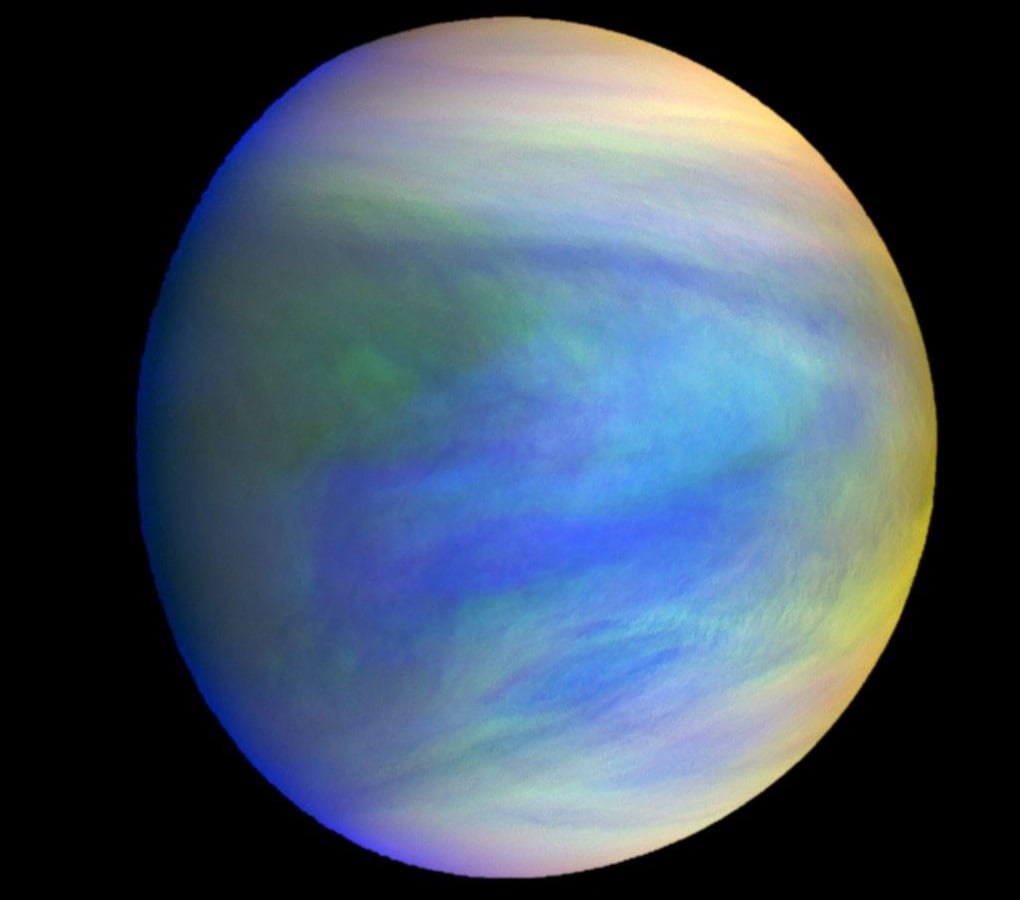The discovery of phosphine in the upper clouds in Venus' atmosphere has generated a lot of excitement. On Earth, phosphine is produced biologically, so it's a sign of life. If it's not produced by life, it takes an enormous amount of energy to be created abiologically.
On other planets like Jupiter, there's enough energy to produce phosphine, so finding it there isn't surprising. But on a small rocky world like Venus, where there's no powerful source of energy, its existence is surprising.
This discovery clearly needs some more investigating.
The phosphine molecule is easily destroyed by UV light. For phosphine to be detected at Venus, something would have to be replenishing it. That's what has us all so interested. Something's replenishing it; either a simple life-form that's found a niche in Venus' atmosphere, or a chemical process we haven't discovered yet.
This is where the Breakthrough Initiatives comes in.
"The next step is to do the basic science needed to thoroughly investigate the evidence and consider how best to confirm and expand on the possibility of life."S. Pete Worden, Executive Director of the Breakthrough Initiatives.
Breakthrough Inititatives (BI) is the child of Yuri Milner. He's a Israeli-Russian technological entrepreneur, physicist, venture capitalist, and philanthropist. He's using a portion of his wealth to fund BI's activities. BI was launched in 2015 to investigate the existence of life elsewhere in the Universe.
In a press release on their website, Breakthrough Initiatives explained their thinking. They intend to fund a research study into life in the clouds of Venus. They'll focus on the discovery of the potential biomarker phosphine. The team will be led by Dr. Sara Seager, a well-known planetary scientist and Professor at MIT. The team will be made up of "world-class physicists, astronomers, astrobiologists, chemists and engineers."
On Earth, phosphine is produced by living organisms or by humans using an energy source. In the natural world, the exact biological mechanisms that produce it are unknown, but they're associated with the bacterial breakdown of organic matter. Phosphine is found in swamps and marshlands, as well as in the guts of animals.
Nobody is saying that the detection of phosphine means a living process is creating it on Venus. (Or they shouldn't be saying that, in any case.) It's just that we don't know of any other way it could be produced on Venus.
"The discovery of phosphine is an exciting development," said S. Pete Worden, Executive Director of the Breakthrough Initiatives. "We have what could be a biosignature, and a plausible story about how it got there. The next step is to do the basic science needed to thoroughly investigate the evidence and consider how best to confirm and expand on the possibility of life."
"Finding life anywhere beyond Earth would be truly momentous," said Yuri Milner, founder of the Breakthrough Initiatives. "And if there's a non-negligible chance that it's right next door on Venus, exploring that possibility is an urgent priority for our civilization."
But what's the best, most scientifically prudent way to explore that possibility?
That's the main question in front of the BI team right now. In the release, they say "The group will investigate the scientific case for life and analyze the technical challenges of an exploratory mission in the event that such evidence proves compelling."
The authors of the study that found the phosphine were suitably circumspect in their paper. In their conclusion they write that "Even if confirmed, we emphasize that the detection of PH3is not robust evidence for life, only for anomalous and unexplained chemistry. There are substantial conceptual problems for the idea of life in Venus's clouds—the environment is extremely dehydrating as well as hyperacidic."
More data is needed before any conclusion can be reached. And the data needed might only be found by sending probes to explore the Venusian atmosphere. Venus has been a little neglected scientifically, while Mars and the Solar System's icy ocean moons have hogged the attention. But over the years, there've been several proposals for exploring our Solar System's very own hellscape.
NASA got us all excited with its recent proposal, the VERITAS (Venus Emissivity, Radio Science, InSAR, Topography, and Spectroscopy) mission. It hasn't been approved, but would launch some time in 2026. However, as the concept stands now, VERITAS would explore the surface in greater detail to understand the geology and history of Venus. It wouldn't explore the atmosphere.
Then there's BREEZE, which stand for Bio-inspired Ray for Extreme Environments and Zonal Explorations. It's a stingray-inspired concept mission developed by the University of Buffalo's Crashworthiness for Aerospace Structures and Hybrids (CRASH) Laboratory.
BREEZE is a morphing spacecraft that mimics the stingray. It would flap its wings similar to how a stingray flaps its pectoral fins. That would allow it to generate lift in Venus' atmosphere.
BREEZE is designed to circumnavigate the planet every four to six days, in the upper atmosphere. It would run on solar power, and would study weather patterns and volcanic activity. Most promising is that it would take atmospheric samples.
Then there's Black Swift Technologies. They're a specialized company well-known for their purpose-built scientific aerial platforms. In 2018 they received funding from NASA to develop a vehicle that could navigate Venus' atmosphere while gathering data. It would take advantage of Venus' winds to harness enough energy to fly. According t Black Swift, it's "a proven method to extract energy from atmospheric shear that has propelled the fastest small-scale aircraft in the world." It's the same method that birds use for long endurance flights over oceans.
"While there have been a variety of systems proposed for upper atmospheric observations of Venus, the planet's high wind speeds pose a significant design challenge," emphasizes Jack Elston, Ph.D., CEO of Black Swift Technologies. "Our solution will be designed to not only survive in the harsh wind environment, but also simultaneously perform targeted sampling of the atmosphere while continuously extracting energy, even on the dark side of the planet."
There's also DAVINCI (Deep Atmosphere Venus Investigation of Noble gases, Chemistry, and Imaging). It's a concept design proposal for a lander. But on its way down to the surface of Venus, it would continuously sample the atmosphere. That would help it address two of its stated goals: To study the origin and evolution of Venus' atmosphere; and to study the atmospheric composition and surface interaction.
Venus hasn't been completely ignored. The ESA's Venus Express concluded its mission in 2014, after nine years in orbit. And Japan's [Akatsuki](https://en.wikipedia.org/wiki/Akatsuki_(spacecraft)#:~:text=Akatsuki%20(%E3%81%82%E3%81%8B%E3%81%A4%E3%81%8D%2C%20%E6%9A%81%2C%20%22,Venus%20on%206%20December%202010.) orbiter is still in service, after ten years at the planet.
There've been a host of other mission ideas from [ISRO](https://en.wikipedia.org/wiki/Shukrayaan-1#:~:text=Shukrayaan%2D1%20(%20transl.,surface%20and%20atmosphere%20of%20Venus.&text=If%20fully%20funded%2C%20it%20would,2%20in%20the%20early%202020s.), Roscosmos, and others. The only problem is that these designs were conceived prior to the discovery of phosphine. To specifically address the phosphine question, a new mission will likely be needed, though one of the proposed vehicles might still be useful.
It's safe to say we can expect more movement on Venus exploration soon. The potential discovery of phosphine demands stringent follow-up. And human nature being what it is, ambitious scientists will want to get busy. But for now, we have to wait.
 Universe Today
Universe Today





